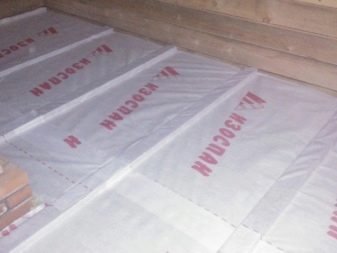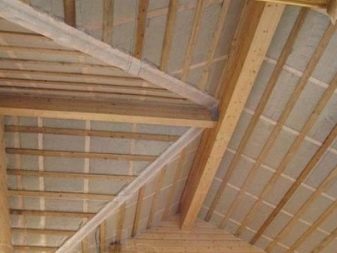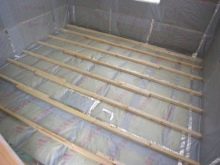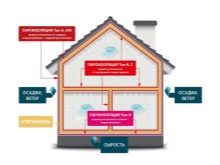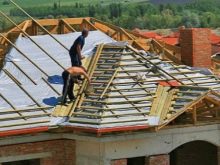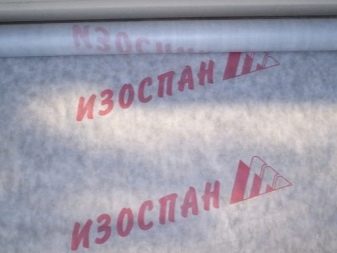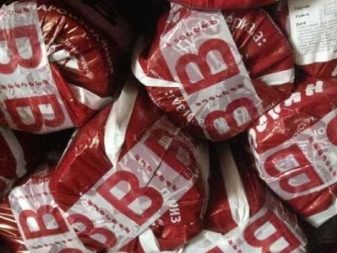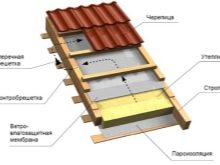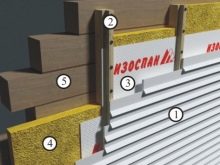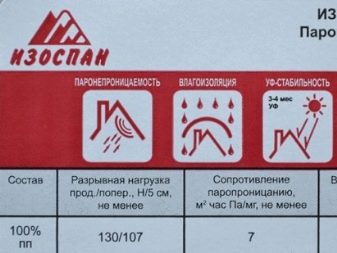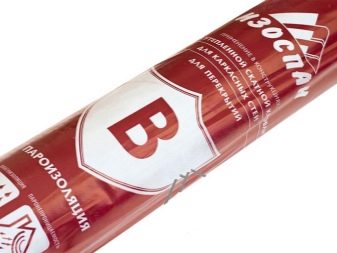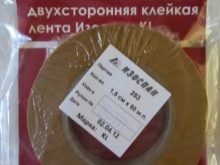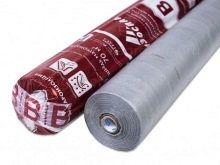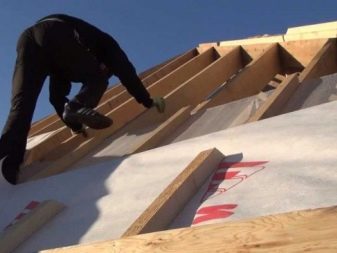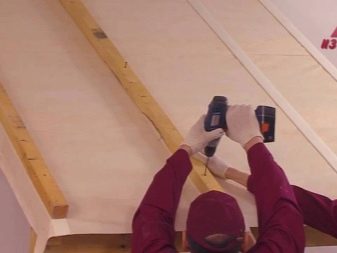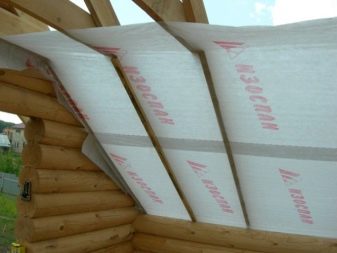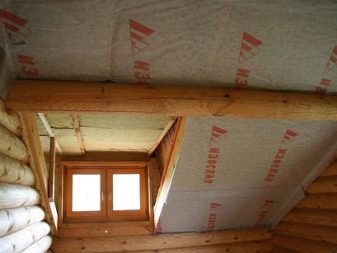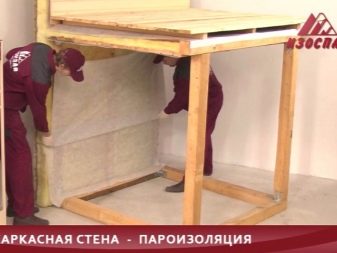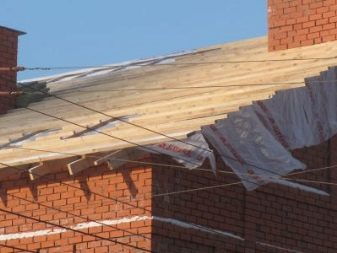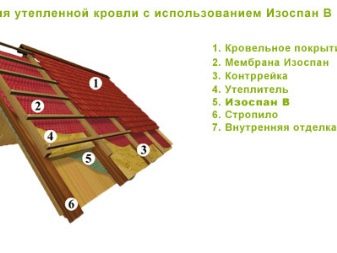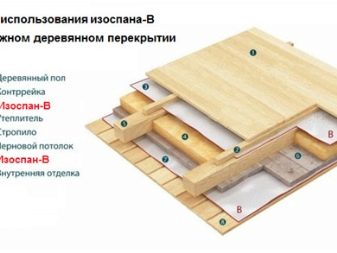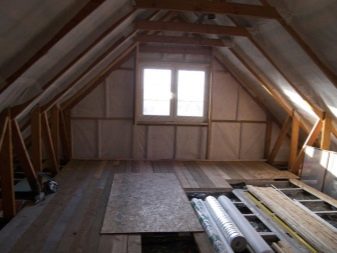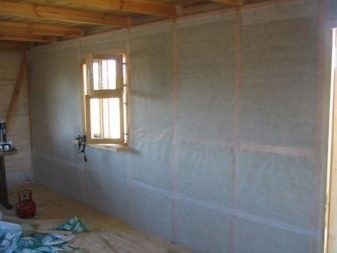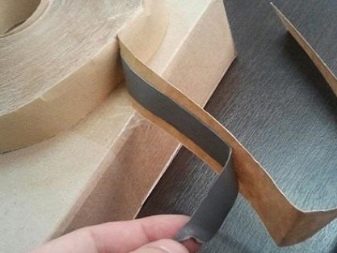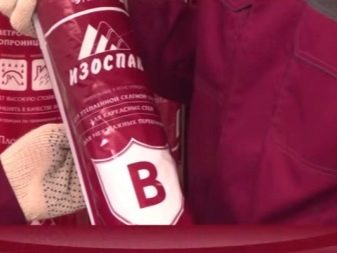Izospan B: scope and installation methods
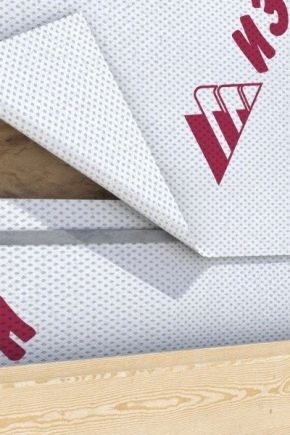
A person is constantly improving their own housing, trying to make it as safe and secure as possible. First of all, it is necessary to pay attention to the insulation of the foundation, because the more reliable and durable it is, the longer it will be able to serve the house.
Experts believe that laying a vapor barrier is one of the most important processes in the construction of a house. One of the most popular and sought-after materials on the market is Izospan B film, which is characterized by high quality, reliability and durability. The manufacturer managed to create an innovative product that is unparalleled in the market.
Properties
The company "Izospan" for many years specializes in the production of materials for vapor barrier. High density and compliance with GOST favorably distinguish the company's products against the background of others. Tens of hundreds of houses are protected by building materials from Izospan, which speaks of their unique technical characteristics and efficiency.
This building material makes it possible to protect structures from excessive vapor release. This circumstance often leads to serious and destructive effects, therefore waterproofing is extremely important.
A distinctive feature of the steam is that it can pass through any structure, including concrete. And living in a house without producing steam will not work, because it is a natural product of our livelihoods. The only exceptions are vapor proof materials, but they are extremely expensive and are not always suitable for building a house.
In addition, full vapor permeability has a negative effect on the ventilation system of the house. It becomes extremely stuffy in the rooms, which will also have a negative impact on the health of living people.Insulators are also under pressure, therefore, the use of Izospan B is recommended. Without appropriate protection, the insulant will soon become unusable and begin to collect moisture, or the material properties and its thermal conductivity will decrease.
A distinctive feature of this construction film is that it fits inside the room. The fact is that its main task is to prevent the penetration of steam from the room into the insulating layer.
This type of material includes two-layer vapor barrier membranes, which can not only hold back moisture, but also do not allow a couple to pass through them. For the production of such films is used only polypropylene, which has managed to establish itself as a reliable and efficient material. Because of this, to break or damage the film is extremely difficult.
Usually Isospan B is available in rolls, the size and width of which is 160 cm. One roll is enough to cover an area of 70 square meters. The main difference is that the material has two sides, so you need to be extremely careful when using it.Each side has a specific function. One of them is smooth, and the second is rough.
Purpose
In cold weather, the temperature difference in the living room and in the street can be significant. As a result, condensation occurs, moisture is deposited on the insulation. If mineral wool or glass wool was used as the main thermal material, they become wet and lose their properties and effectiveness.
The use of advanced vapor barrier membranes prevents this. Izospan B is installed on the side of the room and does not allow the penetration of moisture.
The unique characteristics of this material allow it to be used in the following areas:
- when installing roofing and counter;
- for finishing the ceiling, walls or on the sub floor;
- when installing insulation or rafters;
- for interior or exterior trim;
- as interfloor insulation;
- for finishing with drywall. This technology allows you to glue the film even on metal frames.
Advantages and disadvantages
The official instructions indicate that this building material has a huge number of advantages. And it is true.
Among the main advantages of Isospan B are the following:
- low weight, which greatly simplifies the process of transporting and laying the film;
- high strength, providing resistance to mechanical stress and damage;
- the presence of a double-sided surface, which has a positive impact on the effectiveness of the construction film;
- unique technical characteristics that favorably distinguish Izospan B against the background of other products for vapor barrier;
- ease of installation - the product can be laid using the most simple solutions;
- reasonable price, so that everyone can afford to buy this film for home decoration.
As for the negative sides, then this material does not have minuses. Some believe that the cost is too high, but this is not the case, given the high quality of the material.
Features of use
Before using this vapor barrier material, you need to familiarize yourself with a number of requirements that apply to its installation.
Among them are the following:
- If the insulation is mounted on a sloping surface, then all work should be carried out from top to bottom.The bands of Izospan B must be fixed horizontally, and the overlap should be 15 cm. The use of a special adhesive film makes it possible to isolate the joints.
- It is important to mount the film to the wall in the correct direction. Not everyone follows this rule, but it is critical and has a direct impact on the efficiency of product use. Improper installation of the full extent eliminates the effect of the use of the material. According to official instructions, the smooth side is laid on the insulation, and the rough is sent to the side of the room.
- The membrane can be attached to the surface to be protected using wooden bars as well as pressure plates.
Given the fact that this material for vapor barrier has a wide scope, it is necessary to carefully consider the features of its laying on different types of surfaces. Most often the film is used in the process of attic insulation. First of all, it is necessary to lay the heater itself between the rafters, after which Izospan V. can already be pulled.
The instruction is as follows:
- Izospan is fixed on rafters.Experts advise to carry out the fixation with the help of small bars, the thickness of which does not exceed 5 cm. In some cases, the use of thin strips for pressing is allowed. This method of attachment not only boasts reliability, but also saves the attic space. It is possible to carry out the fastening only if the width of the rafter legs is 3 cm greater than that of the insulation.
- On top of the film, a fine finish is installed, which is fixed in the same way as the vapor barrier itself. Due to this, a gap is formed between the finishing and the material for insulation, which is necessary for the rapid drying of condensate.
Special attention is given to the use of this film in the process of roof insulation. If the roof pie is being assembled, the fastening will be carried out as in the previous version. However, initially it will be necessary to mount the vapor barrier itself. Fixation should be done from the outside, and staplers can be used for this. In addition, you can install the crates from the inside, using a narrow board.
After all the preliminary work is completed, you can lay mineral wool or any other insulation on the steam insulator. In some cases, instead of crates can be limited to ordinary wire. It is necessary to tighten it extremely carefully so that the insulation boards can be fixed between the rafters without any problems.
If mineral wool was used as the base material, then a hydroinsulator should also be attached to the rafters using small bars.
Izospan B - building material, which in most cases is used to trim the vertical walls from the inside.
Instructions for use in this case is as follows:
- First, a bar is installed on the surface, the width of which is the same as the thickness of the insulation. If finishing is carried out, it is possible to use a metal profile, which is extremely important for drywall.
- Now you can proceed to the installation of mineral wool or polystyrene foam. From above, it is imperative to fix the steam insulator, after which final finishing can be carried out.
The process of applying the film to insulate the exterior of the house is slightly different. First, it is necessary to attach a crate from a bar to the walls, the thickness of which will not exceed 3 cm. After that, the vapor isolator Isospan B is tensioned onto it, and the counter lattice is installed later on. As for the waterproofing film, it can be mounted only on the insulating material.
It should be noted that such instructions for the exterior finish, first of all, for houses that are built of wood. The fact is that wooden materials are breathable materials, so they easily let moisture vapor out. As for the concrete walls, they cope with the vapor delay better, so the vapor barrier membrane is used less frequently.
The unique characteristics of Izospan B make it possible to use it not only for walls inside and outside, but also for flooring. Such manipulations should be carried out in cases where it is necessary to guarantee the ventilation gap. The insulating layer itself is mounted between the lags, after which you can proceed to the installation of insulation.Experts advise to fix the film with bars, which not only greatly simplifies the installation process, but also ensures its maximum efficiency.
Due to its versatility, a construction film of this kind can be used in the process of warming attic and interfloor floors. The use of the material in this case is practically no different from the use when warming the floor. It will be installed on the attic side in the same way, but it will also be necessary to attach the film on the bottom side. For fastening, as in other cases, it is best to use bars of small diameter.
Useful recommendations
Above we reviewed the main points of using construction film for vapor barrier Izospan V. First of all, this material is excellent for ceiling decoration. The problem is that this part of the room is usually not insulated due to the design and location. Recommendations from experts will help to ensure maximum efficiency from the use of this material.
Among the most popular are the following:
- If the walls in the room are made of wood, then they must be treated with antiseptic formulations before the vapor barrier. Moisture between the film and the tree dries out very quickly, but still it is better to be safe. Otherwise, there may be a fungus that will not only have a detrimental effect on the condition of the wood, but also may adversely affect the health of the household.
- It is also worth taking care of protecting wood from insects, since after the completion of the work it will not be possible to do this.
- Izospan B has extremely high strength, but the film may be damaged as a result of improper installation or careless handling. It is necessary to be extremely attentive, since the effectiveness of this material depends, first of all, on its integrity. If there are broken places, they are best repaired with adhesive tape or special glue.
According to the reviews, Izospan B is a unique material for vapor barrier.which boasts high quality, reliability and ease of installation.Due to its low cost, it will be affordable for any person who wants to ensure the durability of his home.
With regard to the performance of the material, in this parameter, it is largely superior to conventional film and other analogues on the market. That is why it is better to use this material to protect against moisture.
In the next video you will find instructions on the use of vapor barrier Izospan B.
